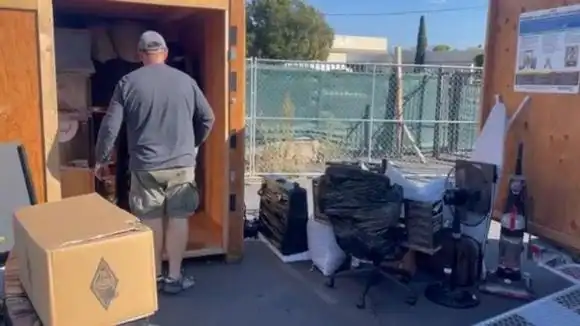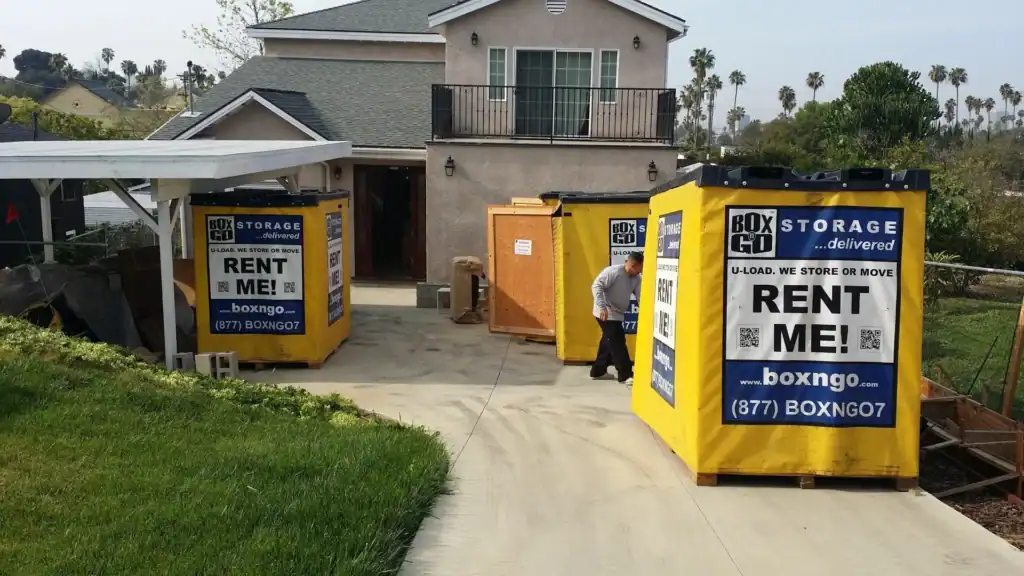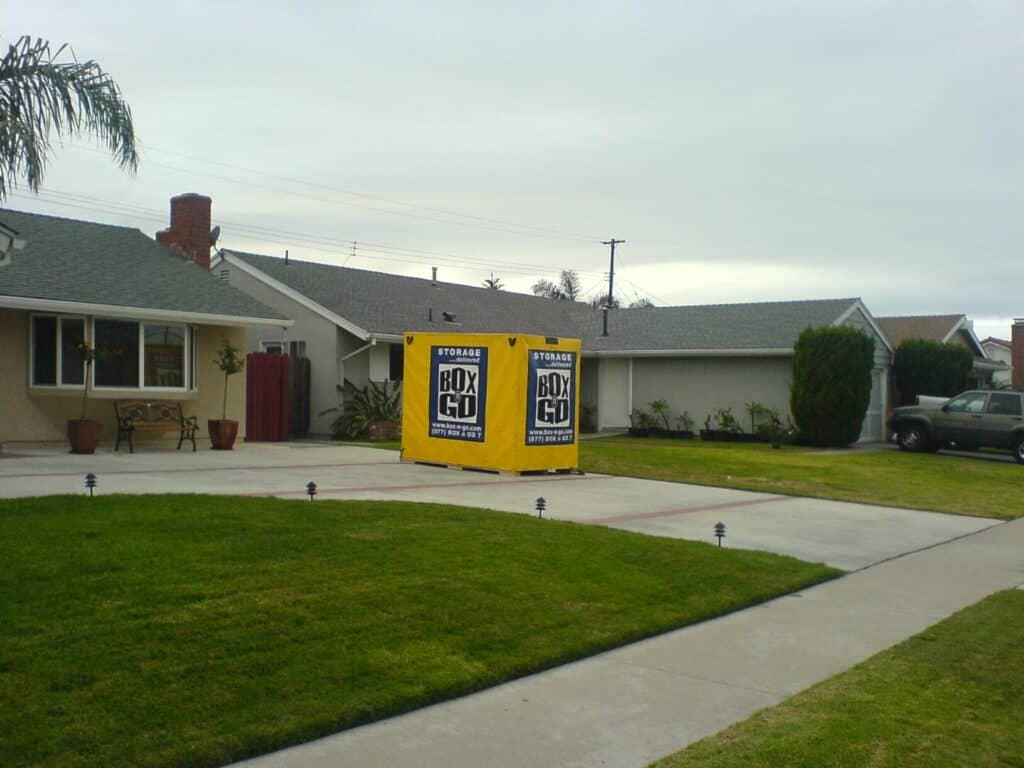Downsizing Tips for Seniors in Encino: Professional Organizer Advice for a Stress-Free Life Transition

Ready to relocate but unsure what to keep and what to let go? That question sits at the heart of every downsizing journey, and the way you answer it can truly transform this stage of life. With the right home organization strategies, you can bring order to your belongings, repurpose items thoughtfully, and create a clutter-free environment that’s easy to maintain.
This friendly guide offers a step-by-step approach tailored to the specific needs of seniors and their families. From setting weekly goals that prevent burnout to matching possessions with the space available in your new residence, each step is designed to provide a sense of relief and clarity. We’ll cover how to organize everything—from treasured keepsakes to unwanted items—so that your transition feels purposeful and thoughtfully planned.
For added peace of mind, consider a professional consultation to guide decisions and streamline the process. And when you need short-term storage during the move, Box-n-Go’s on-demand containers make it simple to relocate belongings without the hassle of multiple trips. Serving greater Los Angeles, Box-n-Go helps seniors and families move with confidence. Call 877-269-6461 today to explore flexible options.
Key Takeaways
- Set a clear purpose to guide decisions and reduce overwhelm.
- Measure new living space before choosing what to keep.
- Break the downsizing process into small, weekly goals.
- Use family help to make sorting days faster and more joyful.
- Consider short-term storage like Box-n-Go to bridge the move.
Understanding Encino’s Senior Living Landscape and Your Goals
Begin with a simple purpose: decide whether safety, social connection, less home upkeep, or being near a favorite place matter most. This short statement will steady choices and calm emotions as you plan a move.
Clarify your purpose and timeline
Set a realistic time window for research and tours. Add buffer days for appointments or family visits so you can compare without rush.
Match your needs to a senior living community
List daily living needs — mobility support, dining, fitness, pet rules, and transport, and match them to features at each location.
- Compare care levels: independent, assisted, or memory care affect space and furniture needs.
- Ask key questions about medical support, activities, and resident-to-staff ratios to help determine fit.
- Budget up front: monthly fees, deposits, and included services shape long-term comfort at home and in a new place.
| Feature | Independent Living | Assisted Living | Memory Care |
| Typical setting | Furnished apartments, social events | Private units, some assistance | Secured areas, structured routines |
| Care level | Low | Moderate | High |
| Impact on downsizing home plan | Keep personal decor; smaller scale | Fewer large items; consider storage | Minimal furnishings; focus on essentials |
| Common questions to ask | Activities, dining, transport | Medication help, therapy options | Staff training, memory programs |
Map your top three choices and rate proximity to parks, medical offices, and family. Use a simple comparison sheet to track tours, questions, and impressions. Then revisit your purpose to confirm each living community supports the life you want now and ahead.
Start the downsizing process early to make the transition smooth
Begin early to turn a large move into manageable steps that protect energy and reduce last minute stress. Give yourself weeks, not days, so each space gets attention without rush.
Room-by-room plan
Work one room at a time. Begin with rooms you use daily and leave storage areas for later.
- Assign weeks: kitchen, bedroom, living area, then garage or attic.
- Batch similar items — linens, cookware, books — to decide once and avoid repetition.
Set realistic time blocks and milestones
Block a few steady hours each week. Add a weekly buffer for surprises like paperwork or returns.
- Set mini-milestones (example: finish closet by Friday).
- Celebrate progress to keep momentum and ease stress.
Create a decision framework for belongings
Use five clear choices: keep, donate, sell, recycle, discard. Keep an “uncertain” box per room and revisit it later.
| Planning Element | Action | Why it helps |
| Room schedule | Assign rooms to weeks | Spreads work and saves energy |
| Decision rules | Keep/donate/sell/recycle/discard | Speeds choices and reduces fatigue |
| Essentials list | Match bed, chair, clothing to new home | Prevents overpacking into limited living space |
| Weekly buffer | Set extra time for surprises | Keeps the timeline realistic |
Smart sorting: keep, donate, sell, or store items with a plan
Create a simple staging spot where each item finds a clear path: keep, donate, sell, or store. A single room laid out in zones cuts clutter and speeds decisions.
How to handle sentimental items and memories
Limit sentimental pieces to one memory bin per person and photograph larger mementos. This keeps the feeling without filling boxes with fragile objects.
Keep heirlooms and albums together and mark them to hand-carry on moving day for extra peace of mind.
Use colored labels and boxes for quick decisions
- Create clear zones: keep, donate, sell, recycle, discard—this visual layout keeps the process orderly.
- Use color-coded labels and sturdy boxes; label sides and tops to save time when stacking or moving.
- Set a quarantine shelf for uncertain items; if you don’t use them in a set period, let them go.
| Action | Why it helps | Where to do it | Notes |
| Sell high-value pieces | Recovers funds | Consignment or online | Use trusted sellers |
| Donate leftovers | Clears space fast | Charity pickup | Schedule pickup same day |
| Group small parts | Prevents loss | Labeled pouches inside boxes | Include cords and manuals |
| Remove piles each session | Keeps home tidy | Out the door | Prevents clutter from returning |
Final note: Prioritize usefulness and joy when you choose what to keep. These practical steps make the downsizing process calmer and more efficient, and offer simple, proven tips to move forward with confidence.
Measure the new home and living space to help determine what fits
A quick measuring session lets you see which pieces truly belong in the new space.
Gather a tape measure, painter’s tape, and a simple floor plan of your new home. Map furniture footprints to scale so you can test layouts before moving day.
Measure doorways, hallways, and elevator clearances. This will help determine whether large items will fit into rooms without costly surprises.
- Use painter’s tape on current floors to outline the new space and check traffic flow.
- Prioritize daily-use pieces first: bed, favorite chair, and a small table.
- Check outlet spots, window heights, and closet depths so lamps, drapes, and organizers work immediately.
Assign a home on paper for every item and snap photos of measurements labeled by room. If something has no place in the plan, it likely won’t suit your living layout.
Smaller scale furniture often makes living feel open and safer. This saves time and keeps pathways clear for mobility and comfort during the move and after.
Protect important records and photos during the move
Before boxes leave the house, organize your most important documents and favorite photos so nothing gets lost in the shuffle. A little planning now saves time and worries on moving day.
Digitize key records and back them up
Gather vital records—IDs, medical files, insurance policies, wills, and powers of attorney – into a single labeled pouch. Scan those documents to PDF and save copies to a secure cloud and an encrypted USB.
Preserve photos and albums without the clutter
Select favorite prints to display, scan older albums, and store originals in acid-free sleeves to protect memories while reducing boxes. This step helps with efficient downsizing and keeps photos safe.
What to carry with you on moving day
- Medications, a week of clothing, toiletries, chargers, glasses/hearing aids.
- An essential records pouch and a list of emergency contacts.
- Label sentimental boxes “Fragile—Open First” and keep them with you when possible.
| Method | Pros | Cons |
| Cloud backup | Accessible anywhere; share with family | Requires strong password and internet |
| Encrypted USB | Offline copy; quick access | Can be lost if not labeled |
| Fireproof pouch | Physical protection on move day | Not a full backup solution |
Final note: Track what you digitize with a short checklist and set calendar reminders to update addresses with banks and healthcare after you settle into your new home. This organized approach keeps important records and photos secure throughout the process.
Enlist family and community support to make the process easier

Relying on trusted helpers lightens the work and keeps decisions calm. Invite close relatives, friends, and local volunteers to join planning and packing sessions. Clear roles and friendly communication keep everyone on the same page.
Assign roles for each step of the move
Start a shared calendar and give each helper a defined task. One person can manage donation pickups, another can list sale items, and someone else can pack kitchen essentials. This structure makes the work reliable and steady.
Hold a short kickoff call to set time expectations, packing style, and safety rules. Ask a trusted friend to be a decision buddy to ease emotional choices.
- Engage community groups for light jobs like assembling boxes, labeling, or quick transports.
- Coordinate with your senior living community on move-in windows, elevator bookings, and parking.
- Schedule short sessions with breaks to protect energy and keep momentum.
Keep the tone upbeat. Volunteers respond to kindness and clear direction. Celebrate progress with snacks, music, or a photo of each cleared room to make the experience rewarding.
| Helper Role | Example Tasks | Benefit |
| Calendar manager | Schedule pickups, reservations, and work sessions | Keeps timing organized and avoids conflicts |
| Decision buddy | Help sort sentimental items, confirm choices | Speeds decisions and reduces stress |
| Community volunteer | Assemble boxes, label, transport small loads | Provides extra hands and local support |
| Logistics contact | Coordinate elevator access and parking with senior living community | Smooths move-in day and prevents delays |
Cost-effective storage that simplifies downsizing in Los Angeles
A driveway-delivered storage container changes how you pace a move: load slowly, sort clearly, and stay in control. This solution reduces clutter and keeps daily life calm while you finalize decisions about furniture and boxes.
Why portable storage helps declutter rooms and garages
Portable storage lets you move items out of sight without committing to a permanent choice. You can clear the garage and open living space to stage the home or simply create safer, wider pathways.
Containers sit at your home so you pack at your own speed. That makes the process less stressful and gives family time to decide what to keep or donate.
Box-n-Go: convenient, affordable storage serving greater Los Angeles
When it comes to storage in Los Angeles, Box-n-Go is hands-down the most convenient and cost-effective option. Serving the broader Los Angeles area, Box-n-Go brings storage to you and makes the move easier.
Moving day tips for seniors entering a new living community
Arriving at a living community goes smoother when you set clear arrival steps in advance. Confirm the senior living community’s preferred move-in window, elevator reservations, and loading area so movers arrive at the right place and time.
Pack an “arrival first” box with bedding, towels, toiletries, medications, simple snacks, and a change of clothes. This makes the first night in your new home comfortable without searching through many boxes.
Label furniture by room and floor to guide movers in one quick step. Keep essential paperwork and medications with you; don’t load them on the truck so the transition stays stress-free.
- Walk the apartment with a short checklist—test lights, outlets, water, and Wi‑Fi—and note any concerns before movers leave.
- Unpack familiar photos and small memories first to make the new space feel like yours and ease moving senior emotions.
- Do a safety scan for rugs, cords, and tight pathways. Adjust furniture for clear, stable routes around the place.
- Schedule a quick stretch and snack mid-day; even with help, a moving senior needs rest and hydration.
| Action | Why it helps | When to do it |
| Confirm logistics with staff | Prevents delays and access issues | One week before move |
| Pack arrival box | Provides comfort on night one | Day before move |
| Room labels and walkthrough | Speeds placement and notes repairs | On arrival, before movers leave |
| Unpack memories first | Makes new space feel like home | First few hours |

Conclusion
A calm plan, steady help, and small steps make the whole move feel manageable and hopeful. This guide shows how clear decision-making and a simple schedule can ease the transition, declutter your space, and help organize everything, ensuring your home is ready for what matters next.
By sorting unwanted items, setting small daily goals, and embracing organizational needs, you’ll experience a transformation that simplifies the downsizing process. Whether it’s finding the right storage solutions or working with professional moving companies, the process doesn’t have to be overwhelming. Stay focused, make thoughtful decisions, and let your space evolve with purpose.
Lean on your living community team, family, and neighbors for logistics and support. And if you need extra space or breathing room during the process, Box-n-Go offers the most convenient and cost-effective storage solution in greater Los Angeles—just call 877-269-6461.
Take a deep breath. With a clear plan and caring support, your new home will hold cherished memories and provide room for what’s ahead.
FAQ
How early should I begin preparing my home for a move to a senior living community?
Start months in advance if you can. Planning early lets you tackle one room at a time, set realistic weekly goals, and avoid last-minute stress. A steady pace—several consistent hours each week keeps energy steady and decisions thoughtful.
What’s the best way to decide what to keep, sell, donate, or store?
Use a simple decision framework: keep items that are useful, bring joy, or fit your new space; sell valuable pieces; donate items that are in good condition; and store things you’re unsure about temporarily. Color-coded labels and a small “uncertain” box per room make choices faster and less emotional.
How can I make sure my furniture fits in my new apartment or cottage?
Measure doorways, hallways, and room dimensions, and map furniture footprints on a floor plan. Use painter’s tape on the floor to outline where pieces will sit. Prioritize daily essentials—bed, favorite chair – before bringing in larger or decorative items.
What paperwork and records should I protect and how should I handle them?
Gather IDs, medical records, insurance policies, wills, and powers of attorney into one labeled folder or fireproof pouch. Scan important documents to PDF, back them up to a secure cloud and an encrypted USB and share copies with a trusted family member.
How do I preserve family photos and keepsakes without keeping everything?
Pick favorite prints for display, scan albums you want to digitize, and store originals in acid‑free sleeves. Limit physical sentimental items (for example, one memory bin per person) and photograph larger mementos so memories stay intact without overfilling space.
When should I use portable storage during the move?
Portable storage works well when you need time to decide or want to clear rooms quickly. Containers delivered to your driveway let you pack at your own pace, keep belongings accessible, and avoid extra driving. For Los Angeles area residents, Box-n-Go offers delivery and climate‑controlled storage—call 877-269-6461 to learn more.
How can family and friends help without causing more stress?
Assign clear roles—someone in charge of donation pickups, another for sale listings, one person to manage logistics and use a shared calendar. Hold a short kickoff conversation to set expectations, schedule short work sessions with breaks, and pick a “decision buddy” to help with emotional choices.
What should I pack in an “arrival first” box for move-in day?
Include bedding, towels, toiletries, a few days’ clothing, medications, chargers, glasses or hearing aids, basic kitchen items, snacks, and essential documents. Label it clearly and keep it with you so the first night in your new home is comfortable.
How do I protect fragile or sentimental items during the move?
Use sturdy boxes, bubble wrap, and label them “Fragile-Open First.” Keep heirlooms and photo albums together and hand‑carry them if possible. Consider temporary storage for larger keepsakes until you’ve settled into the new space and confirmed placements.
What should I check in the apartment right after moving in?
Walk each room with a checklist: test lights, outlets, water, Wi‑Fi, and any appliances. Confirm elevator reservations and parking with staff and do a quick safety scan for rugs or cords that could trip. Note issues before movers leave so they can be addressed quickly.
How do I choose between independent living, assisted living, or memory care?
Match your daily needs—mobility support, medication management, dining, activities- to community services. Visit communities, ask about staff ratios, on-site medical support, and contract terms, and compare how each option affects what you’ll bring into the new home.
Are there cost-saving ways to manage possessions I don’t want to keep right away?
Yes. Use portable storage for a short term while you decide, sell higher-value items through local consignment shops or trusted online marketplaces, and arrange charity pickups for donations to avoid extra trips. This approach reduces waste and saves time and money.
How can I make the move emotionally easier for myself or a loved one?
Clarify your purpose—safety, social connection, less upkeep before decisions get emotional. Pace the work, invite supportive family or community members, keep familiar photos and a few treasured items within reach, and celebrate each cleared room to reinforce progress.


